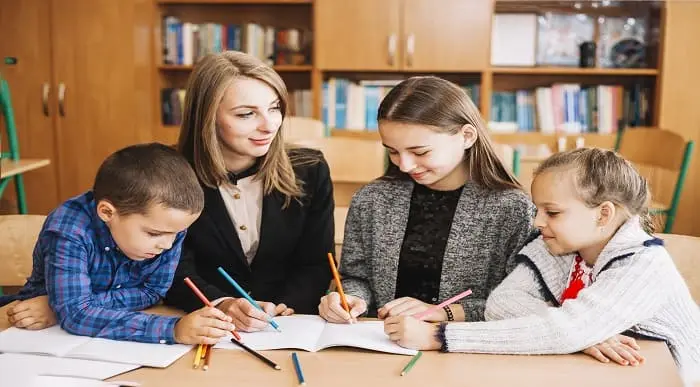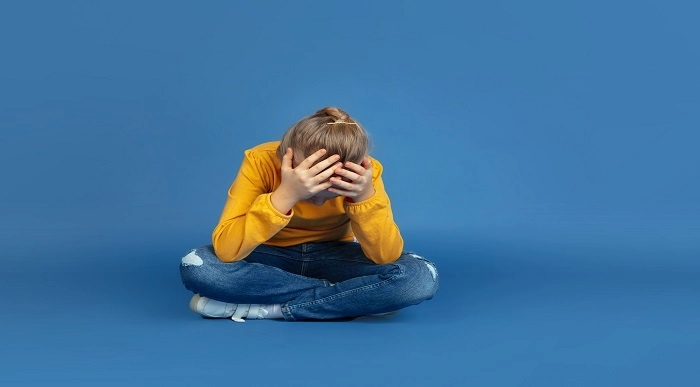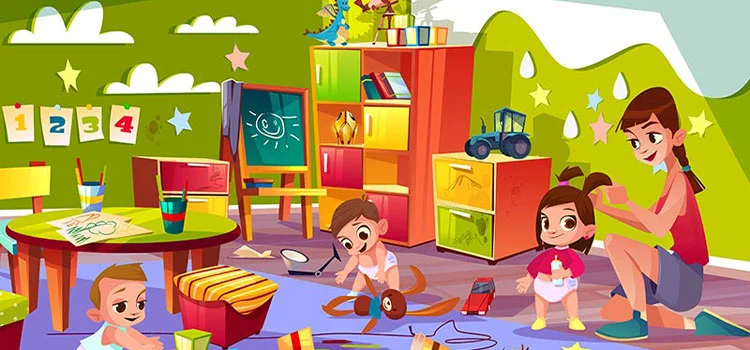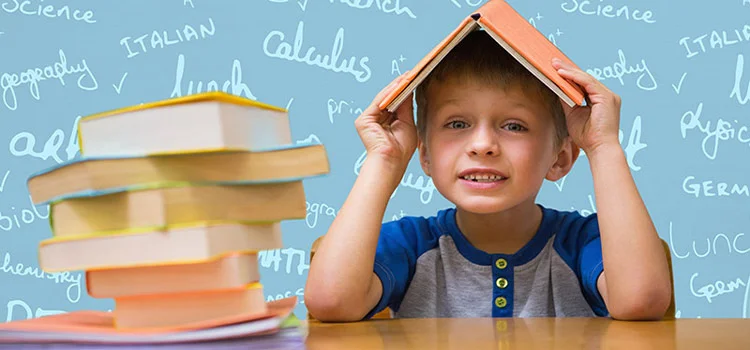Health and Social Care
Environmental Factors That Affect Child Development
Environmental factors that affect child development are not independent of individual factors like family and mental capacity. But how do you identify them so you can ensure an enabling environment for your child? That’s what we will discuss in this blog.
We have looked into tons of research on this topic, and we will quote them for you so you can look them up yourself. When it comes to children, following expert advice and scientific methods is the best option as we really can’t afford to take risks in this regard.
So let’s start right from the bottom. What is child development?
Table of Content
- What is Child Development
- What are Environmental Factors for Child Development
- Environmental Factors That Affect Child Development
- Psychological and Educational Factors
- How Does Maternal Depression Affect Children?
- What Kinds of Environments are Best for Child Development?
- How to Ensure the Proper Environment for Child Development?
- Conclusion
- What to Read Next:
What is Child Development
According to Wikipedia,
“Child development involves the biological, psychological and emotional changes that occur in human beings between birth and the conclusion of adolescence.”

Is this child developing as expected?
This is a question that parents, paediatricians, educators, and caregivers routinely ask as their children grow and change.
Child development specialists have designed a variety of charts and checklists to assist you in keeping track of your child’s growth. They are almost always intertwined with factors that influence a child’s development. But, because children develop at their own rate, it’s hard to predict when they’ll learn a specific skill. However, experts agree upon a list of several major categories that are common to every model of child development that researchers have embarked upon. These are:
-
Physical growth
Physical growth refers to a child’s physical development and stature in general.
-
Cognitive growth
Cognitive growth refers to a child’s mental development.
-
Linguistic growth
Linguistic growth refers to a child’s language development and linguistic preferences.
-
Social-emotional growth
Social-emotional growth refers to the gradual, integrated process in which children develop the ability to comprehend, experience, express, and manage emotions. It also refers to their ability to form meaningful relationships with others.
However, you probably have guessed by now that a 15-year old’s cognitive development will be miles apart from that of a 15-month-old. To answer that, your guess is absolutely correct. This is why, to help monitor a child, child development is separated into stages based on their age. These are:
-
Birth to 18 months
Birth to 18 months is then divided into five distinct sub-stages.
- 1-3 months
- 4-6 months
- 5-9 months
- 9-12 months
- 12-18 months
-
18 months to 2 years
18 months to 2 years is divided into two distinct sub-stages.
- 18 months
- 24 months
-
3 to 5 years
3 to 5 years is divided into three distinct sub-stages.
- 3 years
- 4 years
- 5 years
-
School-age
This is divided into four distinct sub-stages.
- 6-8 years
- 9-11 years
- 12-14 years
- 15-17 years
Naturally, the question that arises here is how do these stages help monitor a child’s development? Based on research, some standards have been designed. These standards describe the typical behaviour of children against each stage of their development. Think of them as sort of like milestones. The developmental milestones provide a basic notion of what to expect as a child grows older.
To give you an example, let’s see what the cognitive development may look like for children from birth to 18 months. Note that the source material for this is Healthline.com.
Typical Cognitive Development for children aged 0-18 months
-
1-3 months
-
- Objects and human faces stimulate their interest.
- It’s possible that repetitive activities will bore them.
-
4-6 months
-
- Recognises faces they have seen before.
- Reacts to displays of love and affection.
- Notices the sounds of music and respond to it.
-
5-9 months
-
- They raise their hand to their mouth.
- Switch things around from one hand to the other.
-
9-12 months
-
- Watches objects fall to the ground.
- Looks for items that are hidden.
-
12-18 months
-
- Has a basic understanding of how to use items such as spoons.
- Possess the ability to point to specific body parts when you name them out for them.
But, remember, these are rough estimates. Just because a child aged 18 months shows the cognitive aptitude of a 24-month-old does in no way indicate that the child is abnormal. Every child is unique. You are the finest person to know your child as a parent. If your child is not hitting the developmental milestones for his or her age, or if you suspect a problem with your child’s development, speak with his or her doctor and express your concerns.
Don’t put it off.
Top Courses of this Category
What are Environmental Factors for Child Development
The impact of the environment on a child’s development, including the physical setting in which they are raised, cannot be overstated. Individual and environmental factors interact to influence the outcome of talent and performance in children. Hence, we cannot isolate the individual factors altogether from environmental factors when it comes to child development.
Another factor that heavily influences a child’s health and development is their early years. Children of all abilities, including those with unique health care needs, can grow up fine in a healthy environment. The phrase “healthy environment” refers to an environment that meets their social, emotional, and educational demands.
It is critical to have a safe and loving environment and to spend time with family playing, singing, reading, and conversing. Nutrition, exercise, and sleep can also have a significant effect.
Environmental Factors That Affect Child Development
How does a child’s environment affect their behaviour?
Although individual and environmental factors cannot totally be separated as they are intertwined, there are some factors that can be isolated. For example, gene heredity plays a big role in a child’s development. However, it is not as much relevant in the case of the child in question as it is in the case of the child’s ancestors.
With that said, what are some environmental factors that influence development? That’s what we will discuss next.
Family and Home
The environment in which children grow has a significant impact on their well-being. This typically starts with their family and their home. But, how does the home environment affect child development?
Well, there are multiple underlying variables at play here.
Home Ownership
Home ownership is a factor that benefits communities and their families. Recent research has discovered that it is also linked to the well-being of children. An increasing body of evidence demonstrates that having a family home enhances early cognitive and behavioural development. Living in a home-owning family, for example, is linked to greater educational achievement at age 7.
(Reference: Jones E, Gutman L, Platt L. Family Stressors and Children’s Outcomes. Childhood Wellbeing Research Centre. London: Dept. of Education. 2013.)
Others suggest that homeownership benefits last well into adolescence and young adulthood. Children who grow up in their parents’ houses are less likely to drop out of high school and become adolescent parents.
Family Structure
Family structure has a strong link to the psychology of children. Growing up with only one parent, in particular, has been linked to a number of unfavourable effects.
Examples of these risks include-
- Behavioural concerns
(Reference: Dornbusch SM, et al. Single parents, extended households, and the control of adolescents. Child Development. 1985; 45:326–341.)
- Health issues
(Reference: Dawson D. Family Structure and Children’s Health: United States, 1988. Data from the National Health Survey No 178. Washington, DC: Centers for Disease Control, National Center for Health Statistics, US Department of Health and Human Services. 1991.)
- Low self-esteem
(Reference: Parish TS. Ratings of self and parents by youth: Are they affected by family status, gender, and birth order? Adolescence. 1991; 26:105–112.)
- Abuse of alcohol and illegal substances
(Reference: Covey LS, Tam D. Depressive mood, the single- parent home, and adolescent cigarette smoking. American Journal of Public Health. 1990; 80:1330–1333.)
- Dangerous sexual behaviour
(Reference: Thornton A, Camburn D. The influence of the family on premarital sexual attitudes and behavior. Demography. 1987; 24:323–340.)
- High dropout rate from high school
(Reference: Astone NM, McLanahan S. Family structure, parental practices, and high school completion. American Sociological Review. 1991; 6:309–320.)
Healthy growth and brain development is possible with an enriching and stimulating home environment. Both ‘enriching’ and ‘stimulating’ are heavy terms. So what exactly do they refer to?
For a child, they refer to love, emotional support, and promoting learning and exploration.
There are generally fewer economic and emotional resources in homes where just one parent is present. After all, only a single person is raising the child, which is a two-person job. Even then, we generally see that many parents struggle with their work-life balance when a child is born. Imagine the pressure when all that struggle is put on the shoulders of a single parent.
Competing pressures at work and at home might make it difficult for a parent to establish a learning and development-friendly environment for their children.

Child Psychology and Behaviour Development Course
- Accredited Courses
- Tutor Support Included
- 3 Installment Plan at checkout
- 14 Days Money Back Guarantee
A Positive Home Environment
A positive environment in a house is a factor that is independent of home ownership. Whether you’re living at a home that you own or in a rented property, it affects you and your children all the same.
A child’s ability to grow, learn, and explore requires a healthy, safe environment. In contrast, a child’s intellectual, social, and emotional growth can be harmed by a poor home situation.
- According to research, a poor family environment during a child’s early years has been related to developmental delays. These include:
- Poor linguistic skills
- Behavioral issues
- A lack of school preparedness
(Reference: Vernon-Feagans L, Garrett-Peters P, Willoughby M, et al. Chaos, poverty, and parenting: Predictors of early language development. Early Childhood Research Quarterly. 2011; 27:339–351.)
- Longer-term consequences have also been related to a child’s early home environment. Examples of such outcomes are:
- Teen parenting
- High school graduation
- Employment and earnings as an adult
(Reference: Aaronson, D. A note on the benefits of homeownership. Journal of Urban Economics. 2000; 47:356–369.)
- According to brain imaging research, growing up in an impoverished or stressful environment can cause the brain to develop differently. The brains of children react differently to situations connected with family income and other socio-economic factors. These factors relate to social and emotional development, cognitive capacity, learning and memory.
(Reference: Hanson JL, Chandra A, Wolfe BL, et al. Association between income and the hippocampus. PLoS ONE. 2011; 6(5):e18712.)
Family Poverty
Poverty has a significant impact on a child’s development and future outcomes.
Children from low-income families have less enrichment experiences and learning resources than children from higher-income families. It is more difficult for low-income parents to provide their children with experiences that promote normal brain development.
However, money is only one aspect of the narrative. With economic difficulties comes the stress of often having access to fewer social and emotional resources. Poor and low-income moms, for example, are more prone to experience stress, worry, and depression, all of which can sabotage healthy parenting.
Low-income youngsters therefore hear fewer spoken words that veer towards the positive side. Instead they often experience a higher proportion of negative utterances than their middle-income counterparts.
Living Conditions
Overcrowding is a danger factor in the development of children. But what is considered overcrowding?
At least, for the topic at our hand, more than one person per room is considered overcrowding.
Crowding has been shown to lower the quality of caregiving environments. Even in infancy children can face severe damage to their physical and psychological well being because of overcrowding.
(Reference: Leventhal T, Newman S. Housing and child development. Children and Youth Service Review. 2010; 32 (9):1165–1174.)
Residential density, which is how many people have their own rooms in their house, has been connected to cognitive, behavioural, and physical health effects. Even if you manage the money and the quality of education, crowding will affect parental habits nonetheless.
Parents, whose families live in close quarters, tend to be-
- Less sympathetic
- Less verbally receptive
- More disciplinative
Kinship Care
Kinship care refers to the extra-parental care that infants and kids receive when their parents are unable to take care of them. Most of the time, the grandparents are put in charge of the child. It’s an increasing trend in developed countries as the parents of the children are busy with their careers.
Children who receive main care from their grandparents are more likely to have a teen parent, a parent who uses drugs or alcohol, a parent who is in jail, or a parent who has health concerns. Negative life experiences like these frequently lead to the formation of grandparent-headed households.
This is a major cause for concern because family structure has been demonstrated to have a considerable impact on children’s well-being, particularly their physical and mental health.
(Reference: Murphey D, et al. Children Living with Grandparents: State-Level Data from the American Community Survey. Child Trends Research Brief: Washington, DC. 2012.)
As a result of these risk factors, children in grandparent-headed households are more likely to develop emotional and behavioural challenges.
However, if given a choice, where would you rather live?
- In foster care,
or,
- In a family where your parents are in a toxic relationship, taking a huge risk where you yourself will end up raised as a toxic human being,
or,
- Under the care of your grandparents
It’s a no brainer for the most of us. However, you can also look for an answer in research done under this topic as well.
Grandparents have been found to provide a more stable and caring environment than foster care or other options.
(Reference: Hayslip B, Kaminski PL. Grandparents raising their grandchildren: A review of the literature and suggestions for practice. The Gerontologist. 2005; 45:262–269.)
Extra support services can help grandparents prepare for caregiving obligations. It helps them ensure better results for their grandkids. Because of the difficult circumstances from which these families frequently originate, a little help goes a long way.
Psychological and Educational Factors
Education
Education is a huge factor in child development as it covers all areas of cognitive development from birth onwards. It is a broad term as it covers multiple other aspects at once, such as-
- There have to be frequent opportunities for play and interaction with other children.
- Access to books and other learning materials also plays a major role in cognitive development.
- Children are naturally curious. So they need to be given opportunities to acquire a range of skills and interests.
- The parent or the guardian of the child also needs to take an interest in the child’s educational activities.
Identity
As the complexity of our thought process deepens when we’re children, our growing sense of self as a separate and valued being also becomes a factor.
So we have to provide them with a positive and encouraging atmosphere to build their identity. Some of the favourable factors in this case are:
- Presence of positive role models of their own gender and culture whom they can aspire to be.
- Frequently praises or encouragement.
- Openness about relationships within the family.
Social Presentation
Children also are affected by how the outside world perceives their appearance and behaviour. Although it’s a part of their identity that grows without any outside influence, we do have to take the responsibility to teach them cleanliness, personal hygiene and appropriate dresses that correspond to their age, gender, culture and religion.
Selfcare & the Sense of Responsibility
Another factor that also helps with the process of building an identity is self-care and a sense of responsibility. Teach the children to-
- Help their parents to do the dishes
- Dress and feed themselves
- Clean their own rooms
- Do their homework on their own and also understand when to take help from parents, teachers and friends
- Build relationships with other people and understand the boundaries
- Manage their finances
This will help them develop both practical and emotional competence.
However, each child develops at a different rate. One can paire specific goals with the parental responsibilities to assist the child in achieving them.
Education of the Parents
Education has an impact on parenting knowledge and beliefs, which in turn impacts parenting practices and the quality of home surroundings.
The educational accomplishments of parents have a significant impact on the surroundings that they create for their children. It is a classic predictor of cognitive and behavioural outcomes.
Almost always, our life is linked with the education we receive. The better the education, the better the human we tend to become. Our minds open up, we become more accepting, our tolerance levels skyrocket, and we tend to be analytical of things rather than straight-up judgemental. Every single of these aspects also follows through to our children and they, in turn, adopt some of these behaviours from us. It’s now widely known that children that live in abusive conditions tend to be abusive themselves as well.
Higher levels of maternal education have been associated with better outcomes in studies. Some of these outcomes include-
- More warmth and responsiveness from parents
(Reference: Davis-Kean PE, et al. The influence of parent education and family income on child achievement: The indirect role of parental expectations and the home environment. Journal of Family Psychology. 2005; 19:294–304.)
- Having extra learning tools at home & also, improved school preparation
(Reference: Magnuson KA, Sexton HR, Davis-Kean PE, et al. Increases in maternal education and young children’s language skills. Merrill-Palmer Quarterly. 2009; 55 (3):319–350.)
- Better educational and employment outcomes throughout life
(Reference: Dubow EF, Boxer P, Huesmann LR. Long-term effects of parents’ education on children’s educational and occupational success. Merrill-Palmer Quarterly. 2009; 55(3):224–249.)
Maternal Depression
The most prevalent medical consequence of childbirth is maternal postpartum depression. While most women experience some depressive symptoms in the first week or two after giving birth, 10 to 15% of new moms experience severe depression, which can continue up to 6 months.
(Reference: Field T, Hernandez-Reif M, Diego M. Intrusive and withdrawn depressed mothers and their infants. Developmental Review. 2006; 26:15–30.)
Question is, is it possible to figure out if someone is suffering from postnatal depression? Some of the most common signs of postnatal depression include:
- Sleep difficulties
- Guilt
- A loss of interest in daily activities
What makes postnatal depression important to our topic at hand?
It’s a MASSIVE factor in child development. The symptoms of postnatal depression make it difficult for new mothers to deliver positive experiences that promote healthy brain development when they occur together. This can lead to undesirable behavioural effects such as disengagement, passivity, and self-control issues.
On-Demand Accredited Courses
Analyze data quickly and easily with powerful PHP library! All datasets included where beginners welcome!
How Does Maternal Depression Affect Children?
Poor educational achievements later in life are linked to early exposure to disengaged or unresponsive parents. According to a longitudinal research, at three months postpartum, children whose moms were depressed had-
- Lower IQ scores
- Poor attention span
- Increased learning difficulties
(Reference: Hay DF, et al. Intellectual problems shown by 11-year-old children whose mothers had postnatal depression. Journal of Child Psychology and Psychiatry. 2001; 42:871–879.)
What Kinds of Environments are Best for Child Development?
There is no straightforward answer to this. Above all, a child needs the love and support of their families to develop properly. However, we can’t always predict the outside influence or even our own circumstances.
But, if we think about it, almost all the factors that we discussed above have to be accounted for. Otherwise, a child will only get an environment that encourages development in one aspect while neglecting all others. This will surely confuse the child and create a haphazard environment.
How to Ensure the Proper Environment for Child Development?
Pacey has a great article regarding how to create an enabling environment for proper child development. It is basically a very short preview of what has been said in this blog.
However, the best option is to take a course on it. Nothing beats professional advice. Look into the following courses:
Child Psychology and Behaviour Development Course
Diploma in Child Counselling Course Online at QLS Level 4
First of all, these are made by professionals. So, as I said earlier, you’ll be getting professional help here. No matter how many blogs you go through on the internet, nothing will surpass expert advice.
Secondly, you can do them at your own pace and once you’re done, you can sit for the assessment exam which will get you a certificate. It will count towards your professional development.
Conclusion
As you can see, there are many environmental factors that affect child development. It’s not always easy for us to ensure that all of these factors veers towards the positive side. However, we have to try our level best to ensure that at least most of them create a favourable atmosphere for the child’s proper development. Our efforts start with our awareness of these factors. Know them properly so you can keep record if everything is on track.
What to Read Next:
- How to Become a Mental Health Support Worker?
- What are the Caldicott Principles? Principles of Caldicott
- What is the Most Enjoyable Part of Care Work
- Why do You Want to be a Carer – Top 20 Questions and Answers
- 10 Effective Communication Skills For Social Workers
- How to become a Social Worker – A Complete Guide
- What is the Most Difficult Part of Care Work? 20 Difficult Parts of Care Work!














